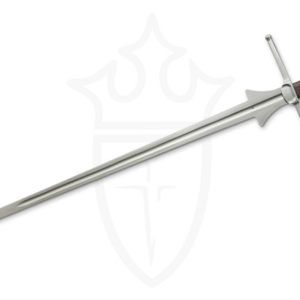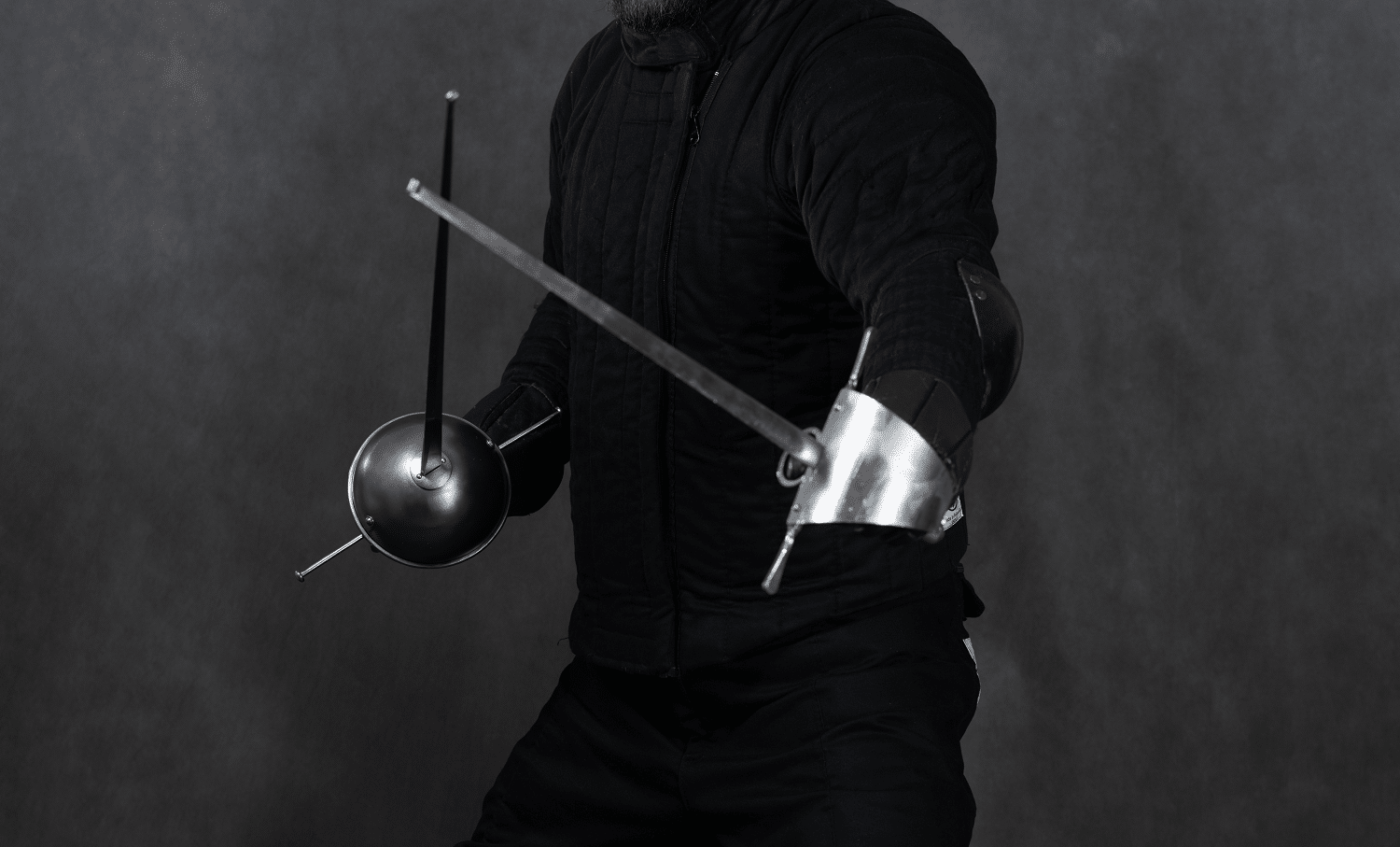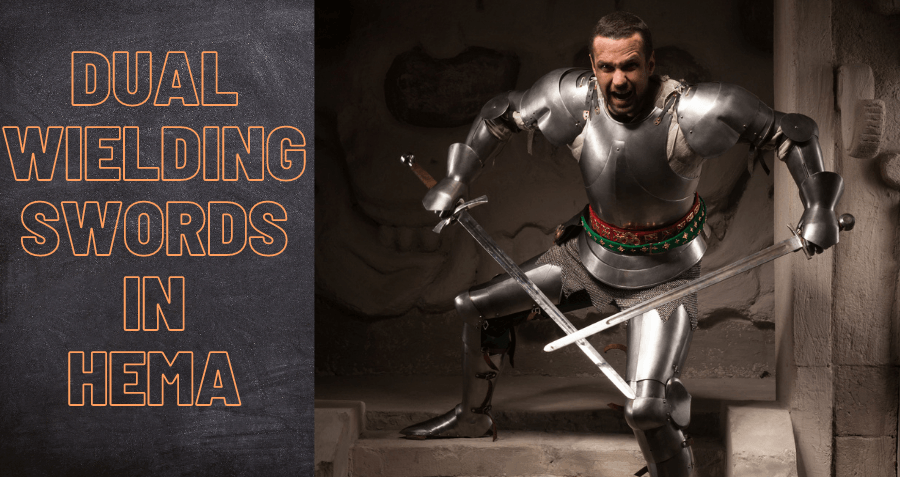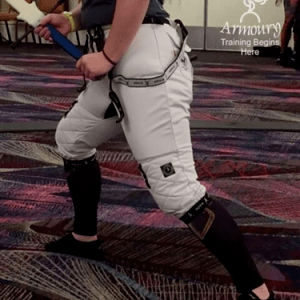Here at Historical European Martial Arts Resources (HEMA Resources / HEMAR) we have a dedicated page, Path of the Long Sword, with lists of historical source based material that teaches how to fight with a long sword. The subsection of this page, German long sword in HEMA, lists the numerous manuscripts that teach German styles of long sword fighting techniques.
Popular media usually depicts sword fighting incorrectly from a non-historical perspective but a rare exception is the 2018 videogame Kingdom Come: Deliverance, whose developers intentionally created a game that had historical accuracy as one of its key selling points. It’s unusual combat system incorporated imitated aspects of German sword fighting, including the usage of Master strikes from the kunst des fechtens style of German martial arts. This has helped build interest in HEMA longsword fighting amongst video gamers but has unfortunately also meant a lot of information about real German longsword fighting is more difficult to find on search engines, as walkthroughs for this videogame are instead frequently appearing on page results.
This article is a brief overview of some general information related to the real life German long sword techniques from the kunst des fechtens (often abbreviated in the HEMA community as KdF) German longsword traditions, which can also be called the tradition of Johannes Liechtenauer. For more specific information on the history about KdF and Johannes Liechtenauer, please read our article, ‘The Johannes Liechtenauer Tradition and the German School of Fencing‘.
German Long Sword Fighting Techniques and Sword Stances
German longsword fighting techniques rely on combining attack with defense. The type of unarmored combat that is predominantly the study within German longsword fighting clubs is commonly called Blossfechten. It contains at its core four guards (sword stances) and five “Master Strikes.” Each of the Master Strikes is designed to defeat a guard position. All cuts or thrusts transition from one guard to another. Aside from the Master Strikes, German longsword techniques include Oberhau and Unterhau strikes, which refer to downward diagonal and upward diagonal cuts. The system also incorporates thrusts, too.
The basic guards (sword stances) used in German kunst des fechtens medieval long sword fighting are,
- Vom Tag, which positions the sword at shoulder height poised for a downward blow;
- Pflug, which has the sword at hip height and close to the body, poised for a thrust;
- Ochs, which has the sword pointed toward the enemy at head height for a high thrust;
- Alber, which has the sword pointed at the enemy’s feet as a provocation to attack.
- Langort, which has the sword blade held directly out in front of the swordsman, similar to the standard ready posture used in Japanese Kendo.
- Schrankhut, which is a transition from Pflug where the tip of the sword points to the right of the swordsman but is still held low.
- Eisenpfort which is reached by holding the sword outward from the body from Pflug to make a longer guard, such as before preparing to thrust.
- Nebenhut, which is reached by drawing the tip of the sword back even further from Eisenpfort to where the tip points behind the swordsman.
- Zornhut, which has the sword raised over the shoulder to prepare for a downward cut with the body leaning slightly back.
As describing these stances with text alone is not as good as showing them, here is a video from the YouTube channel Skallagrim that showcases these sword stances (guards) used in German longsword fighting,
Master Strikes in German Long Sword Fighting
As mentioned before there are the Master Strikes (Meisterhau) within the German kunst des fechtens medieval long sword fighting style. These Master strikes are,
- Zornhau
- Krumphau
- Zwerchhau
- Scheitelhau
- Schielhau
Each strike is designed to attack an opponent who is in any of the previously mentioned guard positions, with specific Master strikes intended to be used against particular sword stances. These strikes are also sometimes referred to as ‘secret strikes’ (Verborgen Haue / Funff Haue). Based on surviving documentation from Renaissance era sword fighting instruction manuals these techniques are not thought to have been common and are unique to those who study the tradition of Johannes Liechtenauer, although there is some techniques that are similar to material that appears in the Armizare system of Italian longsword fighting, too.
Binding and Parrying with the Long Sword
The longsword has main two sections: the strong and the weak. The strong of the sword runs from the crossguard to halfway up the blade, while the weak runs from halfway up the blade to the tip. ‘Weak’ and ‘strong’ in this context are in reference to the mechanical strength and weakness of the sword blade as a lever. By engaging the weak of the enemy’s sword with his own strong, the German longsword martial artist can maintain complete control over the engagement because of the mechanical advantage he gains in leverage. This also means that the objective when parrying is to use the strong part of your sword to deflect the weak of your opponent’s sword. If you tried to use the weak of your sword to parry the weak of your opponent’s sword, your parry may not be as effective. This is one of the most important things to learn about German long sword fighting techniques.
Cuts in this German longsword system can come from any of these stances, either with the true edge (sometimes called the front edge) or the false edge of the sword (sometimes called the reverse edge). The true edge is the one facing the enemy, aligned with the knuckles. The false edge is the edge of the blade facing the wrist of the swordsman. One of the Master Strikes, Zwerchhau, employs the false edge in a horizontal cut to the foe’s left temple.
Tempo in German Longsword KdF Styles
German swordsmanship prizes the concept of single-tempo attacks, in which the defense and attack occur with the same action. The general idea is for the strong part of the blade to be positioned to parry any counter-parts, while the weak of the blade would at the same time strike a vital area. This allows the swordsman to appear to be able to predict their opponent’s counter-attack and in a way the KdF swordsman is anticipating this. While it is impossible to know the precise attack a swordsman will make, each sword stance (guard) only allows certain kinds of attacks to be delivered from them; basically, when you can only perform three or four attacks from a particular sword guard, then one just needs to defend themselves from those possible attacks. By making a Master strike that places the strong of the blade at a defensive angle that would protect against these strikes, the KdF German swordsman is able to protect himself from all possible counter-attacks while delivering an attack of their own.
The Master Strikes rely on taking single-tempo actions. Less skilled fencers often were better off using double-tempo actions. This means defending in one movement and counterattacking with a second movement immediately thereafter.
Half-Swording Techniques in German Long Sword
The length of the two handed long sword meant that the German swordsman could employ a technique called half-swording. This involved gripping the hilt normally, while the off-hand held the blade. Half-swording allows for greater leverage and was essential in dealing with an armored foe. The leverage and point control gained by half-swording allowed the sword to penetrate gaps in armor more efficiently than in normal grip. Essentially, half-swording allows the long sword to be used like a smaller spear to defeat plate armored opponents by attacking vulnerable gaps such as the armpits and face visor.

Recommended HEMA Books to Learn German Long Sword Fighting Techniques
As mentioned previously at the beginning of this guide, here at Historical European Martial Arts Resources (HEMAR) we have a dedicated page, Path of the Longsword, that lists numerous historical manuscripts that teach long sword fighting techniques, including those from the German schools. For a detailed overview of this material you should read the Path of the Longsword page, as it will provide you a complete picture of information that is commonly studied within the HEMA community related to longsword fencing.
Having said this, here are some excellent books that you can purchase that teach KdF style longsword fighting.
You can also find a list of historical source manuscripts that teach historical German longsword fighting at our Path of the Longsword page.
How to find a HEMA Club and Instructors that Teach German Long Sword Fighting
If you are looking for a HEMA instructor or club where you can learn German style medieval longsword fighting then you are in luck. Kdf German longsword is one of the most common styles of HEMA sword fighting in the modern world. There are numerous clubs around the world that teach it. By using the HEMA Resources Club Finder you can search for clubs near your home city, and by using the ‘Select category’ drop down menu you can pick ‘German longsword’ to show all of the clubs that teach kunst des fechtens German longsword fighting.
If there are no local clubs near you, we recommend reading our article on how to learn HEMA when there are no local clubs near you.
Useful Equipment for Learning German Long Sword Fighting
As a beginner it is important to have useful training tools for learning longsword. It is challenging to learn how to properly execute the techniques of historical swordsmanship without an accurate training weapon. We highly recommend the Kingston Arms Sport Feder as an affordable steel training sword for German long sword fighting.
You can also read our recommendations for longsword beginner gear article for further information.
*****
We hope this guide helps you start your journey into learning historical German long sword fighting.
If you’d like to learn more information about historical fencing practices please check out our Learn HEMA page for a guide to learning about the historical weapon that interests you. You can also find more guides we’ve written about other topics at our Helpful Guides page. You can also join the conversation at our forums.























2 Responses
Your information is valued, I’m limited with HEMA schools here in Northern Utah and will use your content in the future.
I would have liked more visual example, but very nice informstion